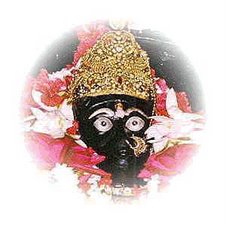JASON MOTLAGH IN SOUTH BASTAR
TWO years ago, Comrade Sunil used his given name and spent half the day at school, the remainder working the red fields of his ancestral village.
This all changed one night when he found his home torched and his brother dead outside, allegedly shot by state-sponsored civilian militia on the pretext of being a Maoist sympathiser.
Warming by a campfire deep in the mountain jungle of southern Chhattisgarh, the 18-year-old swears he will never give up his home-made gun. "I am prepared to stay out here and fight like this for the rest of my life," he said. "And so are all the comrades of the People's Liberation Guerrilla Army."
There is a war in the heart of India, and it is spreading. In the shadow of Bollywood and the info-tech boom, Maoist insurgents, known as Naxalites, affect about one-third of the country's districts. Manmohan Singh, the prime minister, has called them the "single greatest security challenge ever faced by our country".
Over the weekend, Naxalite guerrillas in Jharkhand state gunned down 19 people at a village cultural event, including the youngest son of the former chief minister, the latest in a series of attacks targeting state officials and their kin.
It is no coincidence that the Naxalites' strength is concentrated in the most backward states - Bihar, Jharkhand, Chhattisgarh and Orissa, and to lesser degrees rural parts of Andhra Pradesh and Maharashtra - where poverty and poor education offer fertile ground for recruiting.
Their name comes from the West Bengal village of Naxalbari, scene of an armed peasant uprising 40 years ago. Now estimated to have 20,000 hardcore fighters backed by a network of tens of thousands of village militia, Naxalite leaders claim almost 40 per cent of their ranks are women.
A steady crackdown by state authorities in Andhra Pradesh has killed hundreds of guerrillas and led to the arrests of top leaders thanks to special jungle commando units aided by paid informants.
But insurgents have regrouped in the dense forest belt in neighbouring Chhattisgarh, consolidating their foot-hold among dirt-poor tribal communities all but abandoned by the state. "The areas to which the Maoists have moved in to fight are in almost complete administrative neglect," said Ajai Sahni, director of the Delhi-based Institute for Conflict Management. "You couldn't even keep cattle there."
A report by the Asian Centre for Human Rights, a think-tank that monitors insurgent groups, said that out of 384 conflict-related deaths - civilians, security forces and insurgents - between January and September, Chhattisgarh accounted for 208, or 54 per cent.
The absence of capable security forces has emboldened Naxalites. In March, a pre-dawn raid on a police outpost in Rani Bodli left 55 security personnel dead.
Instead of bringing in suitably-trained reinforcements, critics say a foolish state campaign to arm civilian militia, known as Salwa Judum ("peace movement"), has made a problem worse.
The creation of special police officers - often no more than rifle-toting teenagers - to enforce security has opened the door to excesses such as rape and extra-judicial killings that have sent bystanders such as Comrade Sunil into the arms of the rebels. Villages, meanwhile, are under pressure to choose between the militia or the Naxalites. Hundreds have died in the crossfire.
source-maoistresistance
Subscribe to:
Post Comments (Atom)







No comments:
Post a Comment